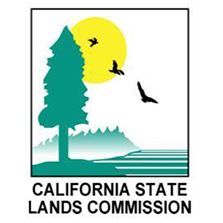Ensuring Public Access to California Waterways–In Plain Language
New California State Lands Commission Public Access Guide Required Reading for Coastal Enthusiasts

California residents are passionate about their coastal and inland waterways–and especially their ability to access and enjoy these natural resources. It was concern over being “walled off from the coast” by private development that prompted California voters in 1972 to approve an initiative measure that created the California Coastal Commission and led to California’s Coastal Act–the strongest coastal planning and regulatory statute in the nation. Indeed, public access to waterways is a right California residents enjoy under the state Constitution. (Most Californians don’t realize that they similarly enjoy a constitutional right to fish, under a separate provision of the same document.)
There are a multitude of California waterways for state residents and visitors to enjoy: California possesses a spectacular and diverse 1100-mile coast bordering the Pacific Ocean, as well as 4,000 linear miles of shoreline along the state’s extensive system of inland navigable lakes and rivers. Under state law, it is the California State Lands that owns and manages these coastal and shoreline resources, in trust for current and future generations of Californians.
The public’s desire to exercise their constitutionally-protected right of access to these waterways often runs up against claims that rights of adjacent private property owners limit or override the public’s right of access. And for many years these access conflicts have generated political controversy, litigation and, on occasion, even violence.

So it’s very good news indeed that the State Lands Commission has recently published “A Legal Guide to the Public’s Rights to Access and Use California’s Navigable Waters.” Should you fear from the official title of the Guide that the Commission has gone all jurisprudential on California residents, rest easy: the Guide is intentionally written in clear, layperson language. So it’s no legal treatise but, rather, an accessible and easily understood explanation of the scope of the public’s access rights to state tidelands, beaches, rivers and lakes. The Guide is a valuable resource that all Californians seeking to exercise their rights of public access to state waterways should carry in their backpacks or on their smartphones. So too should coastal and shoreline property owners, so that they’re similarly apprised of their rights and duties when it comes to the California waterways that they too enjoy.
Publication of the Guide is the culmination of a lengthy project undertaken by the State Lands Commission, in consultation with the California Attorney General’s Office. (I’m proud to note that U.C. Davis law students externing in those two state offices played a substantial role in researching and drafting the guide.)
Currently, “A Legal Guide to the Public’s Rights to Access and Use California’s Navigable Waters” is available on the Commission’s “Public Access” webpage–an excellent, broader source of information on Californians’ access rights to state lands and waterways–in both English and Spanish. My only suggestion is that the Commission and Attorney General’s Office consider translating the Guide into several additional languages, in order to facilitate access to state waterways by a broader and more diverse population of Californians.
The State Lands Commission and Attorney General’s Office are to be commended for their “outside the box” efforts to both explain and protect the right of California residents and visitors to enjoy the state’s spectacular ocean coast and inland waterways.
[Next up: California’s single most controversial coastal access dispute finds its way to the U.S. Supreme Court.]
Reader Comments
One Reply to “Ensuring Public Access to California Waterways–In Plain Language”
Comments are closed.








Unfortunately, the Commission’s guide is misleading at a number of points. Footnote 50 discusses article I section 25 of the state constitution. Article I Section 25 was proposed by the legislature and adopted by the people on November 8, 1910. The ballot argument indicated that if the proposition were adopted, the state would not be able to dispose of land without reserving the fishing rights. The first clause guarantees the public’s right to fish from or on state-owned lands. The second clause provides “no land owned by the State shall ever be sold or transferred without reserving in the people the absolute right to fish thereupon.” Footnote 50 cites California Attorney General’s Opinion 53-193, (1953, 22 Ops. Cal. A try. Gen. 134, which opined that “land owned by the state” as used in the second clause did not mean all land owned by the State, but only “public lands of the state” as used in the first clause, and that “public lands” did not include lands purchased by the state from private parties for governmental purposes. Unfortunately for the integrity of the Commission’s document, a 1978 California Supreme Court decision disagrees with the Attorney General’s Opinion. “Public lands ” as used in Article I Section 25 includes land purchased from private parties, and includes land purchased for governmental purposes. “Public land” as used in Article I Section 25 means all state-owned land. The only land owned by the State which the public is not entitled to fish from and on is land being used by the state for purposes incompatible with public use (State of California v. San Luis Obispo Sportsman’s Assoc., 1978 22 Cal. 3d 450). That leaves us with a problem. State representatives have made a practice of not reserving fishing rights upon the sale or transfer of State owned land purchased from private parties, and continue that practice today. What is the effect? Likely, the transactions which omit the reservation are void as beyond the authority of both parties – the state still owns the land and the disappointed buyer is entitled to his money back. In the alternative, the law may treat the reservation as having been made and accepted even though neither party has ever been aware of it. Francis Coats [email protected]